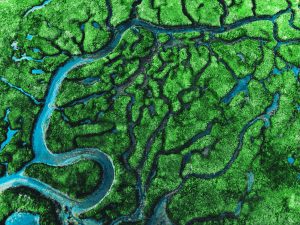
While ancient Romans could supply water to Rome using gravity alone, today, electricity plays a major role in collecting, treating, and delivering water. Consequently, when water is lost in a distribution system through leakages, illegal tapping, or other issues, so too is the energy used to get water to a potable state. This wasted water is known as non-revenue water (NRW), meaning it runs through a utility’s pipes but is never paid for, and in some cities, up to 70% of water is NRW.
This is why water utilities worldwide are digitizing operations. By combining telemetry, industrial internet of things (IIoT) technologies, and cloud-based analytics, system managers can now monitor real-time operations to more quickly identify where water losses are occurring and strategize how to address them. These water-conservation monitoring efforts can positively impact both the environment and utilities’ bottom lines. For one Italian utility that partnered with Schneider Electric, digitizing operations helped them reduce water losses to half of Italy’s national average and boosted their earnings before interest, taxes, depreciation, and amortization (EBITDA) by 22% over three years.
Improved water efficiency in Italy
Padania Acque manages water services for 115 municipalities in Northern Italy’s province of Cremona. Like many water utilities throughout Italy and Europe, Padania Acque embarked on a program to increase efficiency and rehabilitate older infrastructures. Their service territory is mostly agricultural with low population density, making water loss tracking especially difficult.
Lost water is a utility energy expense that’s not covered by earned revenues. Padania Acque worked with Schneider Electric to centralize its operations, enabling a systemwide, real-time network view that provides data necessary to identify problem locations.
- Schneider Electric coordinated with the utility to integrate all the relevant information of the network of its entire service territory in the EcoStruxure™ Water Loss solution and built the hydraulic model of its entire service territory in EcoStruxure Water Simulation.
- The network was configured and monitored in the system, with sensors placed in manageable zones to determine water balance (the volume of water entering each zone versus what’s delivered) using existing automated meter reading data for comparison.
- The system prioritized zones for active leakage control, and field teams walked each zone using handheld devices that precisely pinpointed where underground leaks were occurring.
- System operators use predictive modeling software to develop a plan to repair and upgrade where leaks occur.
By enabling an active leakage management process that considers several factors (e.g., network pressures, criticality of specific zones, and population density), they can prioritize issues to address.
Over a three-year period, Padania Acque was able to:
- Reduce energy consumption by at least 5%
- Cut water losses to 24% (vs. Italy’s 42% average)
- Improve system continuity by reducing downtime
- Raise earnings by 22%
- Gain top marks from Italy’s national energy and water services regulatory authority
Building a solution
Like Padania Acque, global water-management utilities are seeking to maximize investment in their systems by increasing the amount of water that is actually paid for. Schneider Electric solutions that can help companies meet this goal include:
- EcoStruxure Water Advisor. This software suite provides end-to-end water cycle intelligence for increased sustainability. Its predictive analytics can help:
- Optimize water quality
- Reduce NWR
- Enhance real-time analysis of water resources protection
- Minimize water discharge
- Offer advanced control of networks, plants, and water resources
- EcoStruxure Water Loss. This big data platform easily integrates with most corporate applications to manage the entire water-loss cycle, allowing water utilities to detect leaks and reduce overall costs.
- EcoStruxure Water Simulation. This hydraulic modeling tool simulates the flow and pressure in water distribution and transmission networks, using real-time data derived from SCADA systems to analyze and track the current state of the water network. This decision-making tool helps with instant and identified operational benefits and bottom-line advantages.
- EcoStruxure Geo SCADA Expert. This open software platform provides powerful features for managing critical remote operations infrastructure. Alarms and historical data are collected over long distances, with access for local and remote users via integrated client applications and external data management applications.
- SCADAPack 47xi Smart RTUs. These rugged, remote terminal units (RTUs) are designed for process automation, device management, data concentration, and data logging in geographically dispersed, remote environments. The RTUs perform potable water analytics at the edge to help optimize chemical injections, identify predictive maintenance opportunities, and perform zone pressure management.
To learn more about Padania Acque’s success – and how to utilize Schneider’s services for greater water efficiency, sustainability, and profitability – visit our Water and Wastewater Management webpage.



